
Find out how much of the water on Earth available as drinking water.
- Subject:
- Life Science
- Physical Science
- Material Type:
- Activity/Lab
- Author:
- National Air and Space Museum
- Date Added:
- 09/07/2022

Find out how much of the water on Earth available as drinking water.
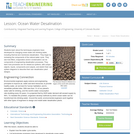
Students learn about the techniques engineers have developed for changing ocean water into drinking water, including thermal and membrane desalination. They begin by reviewing the components of the natural water cycle. They see how filters, evaporation and/or condensation can be components of engineering desalination processes. They learn how processes can be viewed as systems, with unique objects, inputs, components and outputs, and sketch their own system diagrams to describe their own desalination plant designs.
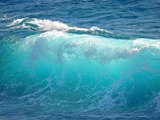
Today's lesson is about Saltwater vs. Freshwater and what can and can not drink or live there. There are 2 Activities and a story slide with this lesson. If time permits, there is a video at the end of this lesson.
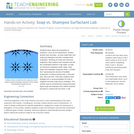
Students learn about the properties of solutions—such as ion interactions, surface tension and viscosity—as they make their own soap and shampoo and then compare their properties. Working as if they are chemical engineers, they explore and compare how the two surfactants behave in tap water, as well as classroom-prepared acidic water, hard water and seawater using four tests: a “shake test” (assessing the amount of bubbles produced), a surface tension test, a viscosity test, and a pH test. Then they coalesce their findings into a recommendation for how to engineer the best soap versus shampoo. The activity may be shortened by using purchased liquid soap and shampoo from which students proceed to conduct the four tests. A lab worksheet and post-quiz are provided.
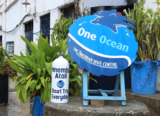
In this presentation, we will discuss how saltwater intrusion affects small islands freshwater supplies, and how tourism is a significant part of this. In Zanzibar fresh water for drinking and other purposes come from rain that replenishes the island’s groundwater reservoir and in many cases freshwater is a scarce resource. On top of this, the excessive pumping in groundwater for the tourist industry increases the risk of salt water seeping into the freshwater magazine from the sea, thereby destroying the freshwater resource.
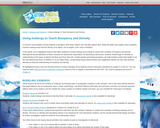
This article highlights activities for elementary students that model icebergs and develop an informal understanding of the concepts of buoyancy and density. Suggestions for inquiry-based activities are included.
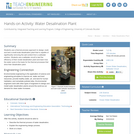
Students use a thermal process approach to design, build and test a small-scale desalination plant that is capable of significantly removing the salt content from a saltwater solution. Students use a saltwater circuit to test the efficiency of their model desalination plant and learn how the water cycle is the basis for the thermal processes that drive their desalination plant.
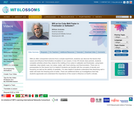
With an often unexpected outcome from a simple experiment, students can discover the factors that cause and influence thermohaline circulation in our oceans. In two 45 minute class periods, students complete activities where they observe the melting of ice cubes in saltwater and freshwater, using basic materials: clear plastic cups, ice cubes, water, salt, food coloring, and thermometers. There are no prerequisites for this lesson but it is helpful if students are familiar with the concepts of density and buoyancy as well as the salinity of seawater. It is also helpful if students understand that dissolving salt in water will lower the freezing point of water. There are additional follow up investigations that help students appreciate and understand the importance of the ocean’s influence on Earth’s climate.